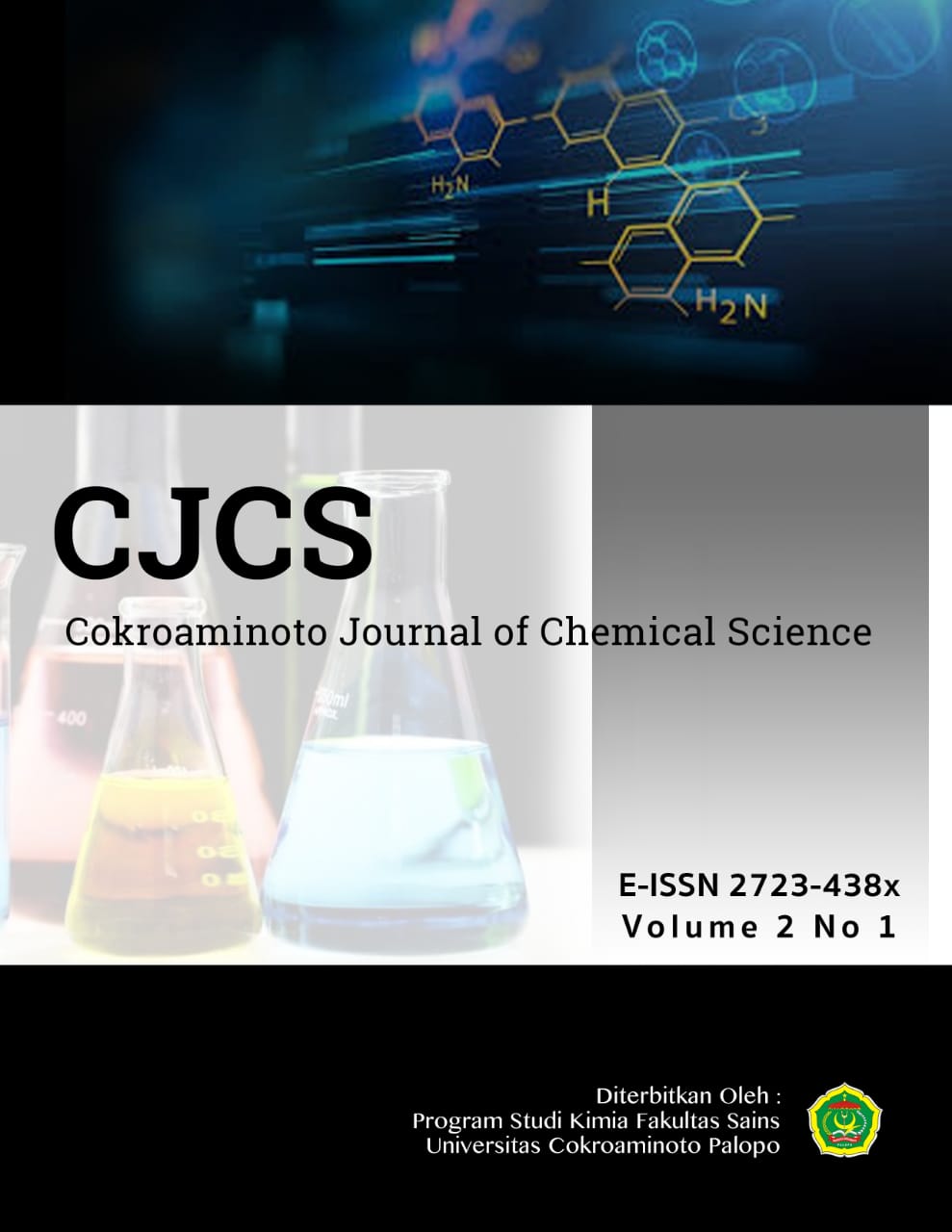PEMANFAATAN KARBON AKTIF DARI LIMBAH SERAT SAGU (Metroxylon sagu) SEBAGAI ADSORBEN DALAM PEMBUATAN SMART FILTER LIMBAH CAIR DOMESTIK
Keywords:
Activated Carbon, Smart Filter, COD, pHAbstract
This study aims to make a Smart Filter for domestic liquid waste by utilizing activated carbon from Sago Fiber Waste as an adsorbent. The stages of this research consisted of making activated carbon, characterizing activated carbon and testing the smart filter. The results of the research show that activated carbon from sago fiber (Metroxylon sago) is needed to produce the best Smart Filter in reducing levels of domestic liquid waste (household liquid waste) by as much as 20 g. This is based on the results of tests carried out in this study where the more activated carbon is used, the more reduction in waste content is produced, resulting in a decrease in the content of Chemycal Oxygen Demand (COD) by 4%. The Smart Filter test results in reducing levels of domestic liquid waste (household liquid waste) in the Gray Water category gave a good effect according to the results obtained for all test parameters carried out, namely turbidity, pH and Chemycal Oxygen Demand (COD). Based on observations made from the use of Smart Filters with two forms, namely powder and granules, better results are obtained, namely the use of Smart Filters that use powdered activated carbon.
Downloads
References
[2] Hayati, R., Pengelahan Limbah Rumah Makan Menggunakan Sistem Kombinasi Abr dan Wetland dengan Sistem Kontinyu. Jurnal Teknik Lingkungan dan Ilmu Tanah. Universitas Tanjungpura. Pontianak. 2003
[3]Purwanti, F., Pengolahan Limbah Rumah Makan dengan Proses Biofilter Aerobik. Jurnal Teknik ITS Vol.4, No.1. Institut Teknologi Sepuluh November, 2015.
[4] Dewi, U., Meminimalisir Kadar Detergen dengan Penembahan Koagulan dan Filtrasi Media Saring pada Limbah Kamar Mandi. Jurnal Higiene. Vol 1. No 1. Politeknik kesehatan Makassar, 2015.
[5] Aditia, S., Reduksi pH, BOD, dan COD dalam Grey Water dengan Proses Elektrokuagulasi-Sedimentasi. Jurnal Ilmiah. Vol. 12. No. 3. Universitas Batanghari. Jambi, 2012.
[6] Megawati, Adsorpsi Free Fatty Acid (FFA) Minyak Curah menggunakan Arang Aktif dari Ampas Sagu (Metroxylon sago). Skripsi. Universitas Cokroaminoto Palopo, 2017.
[7] SNI 6989.73, Air dan Air Limbah. Cara Uji Kebutuhan Oksigen Kimiawi dengan Cara Refluks Tertutup Secara Titrimetri. Badan Standarisasi Nasional. Jakarta, 2009.
[8] SNI 0-3730, Syarat Mutu Karbon Aktif. Badan Standarisasi Nasional. Jakarta, 1995.
[9] Pitaloka, A, Optimalisasi Aktivasi Karbon Aktif Tempurung Kelapa dengan Ragam Suhu dan Konsentrasi Aktivator ZnCl2. Skripsi. Departemen Kimia Fakultas Matematika dan Ilmu Pengetahuan Alam. Institut Pertanian Bogor, 2011.
[10] Polii, F., F, Pengaruh Suhu dan Lama Aktivasi terhadap Mutu Arang Aktif dari Kayu Kelapa. Jurnal Industri Hasil Perkebunan Vol 12. No. 2. Balai besar Industri Hasil Perkebunan. https://ejournal.kemenperin.go.id. 2017.
Downloads
Published
How to Cite
Issue
Section
License
In submitting the manuscript to the journal, the authors certify that:
- They are authorized by their co-authors to enter into these arrangements.
- The work described has not been formally published before, except in the form of an abstract or as part of a published lecture, review, thesis, or overlay journal.
- That it is not under consideration for publication elsewhere,
- That its publication has been approved by all the author(s) and by the responsible authorities – tacitly or explicitly – of the institutes where the work has been carried out.
- They secure the right to reproduce any material that has already been published or copyrighted elsewhere.
- They agree to the following license and copyright agreement.
License and Copyright Agreement
Authors who publish with this journal agree to the following terms:
- Authors retain copyright and grant the journal right of first publication with the work simultaneously licensed under Creative Commons Attribution License (CC BY 4.0) that allows others to share the work with an acknowledgment of the work's authorship and initial publication in this journal.
- Authors are able to enter into separate, additional contractual arrangements for the non-exclusive distribution of the journal's published version of the work (e.g., post it to an institutional repository or publish it in a book), with an acknowledgment of its initial publication in this journal.
- Authors are permitted and encouraged to post their work online (e.g., in institutional repositories or on their website) prior to and during the submission process, as it can lead to productive exchanges, as well as earlier and greater citation of published work.

